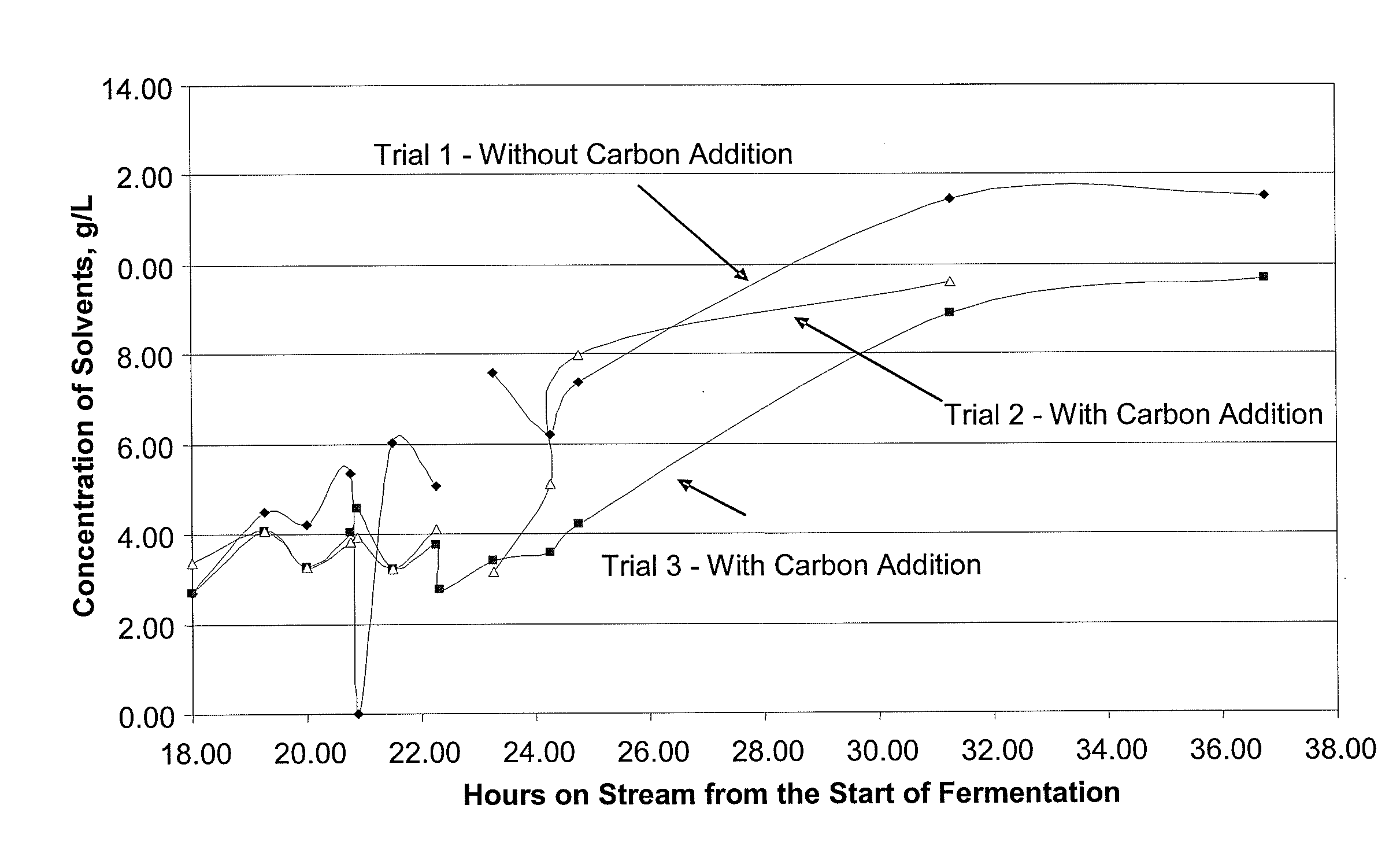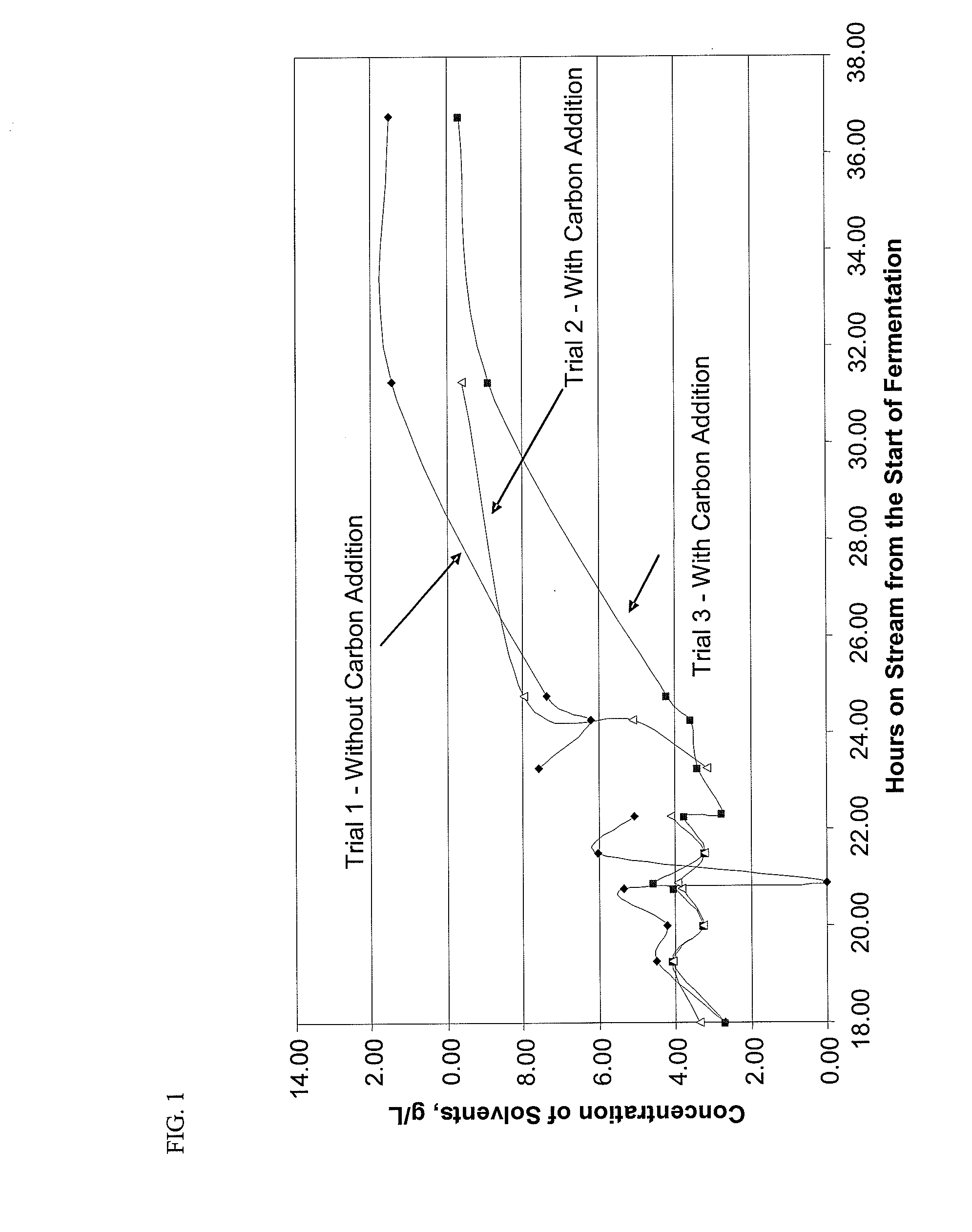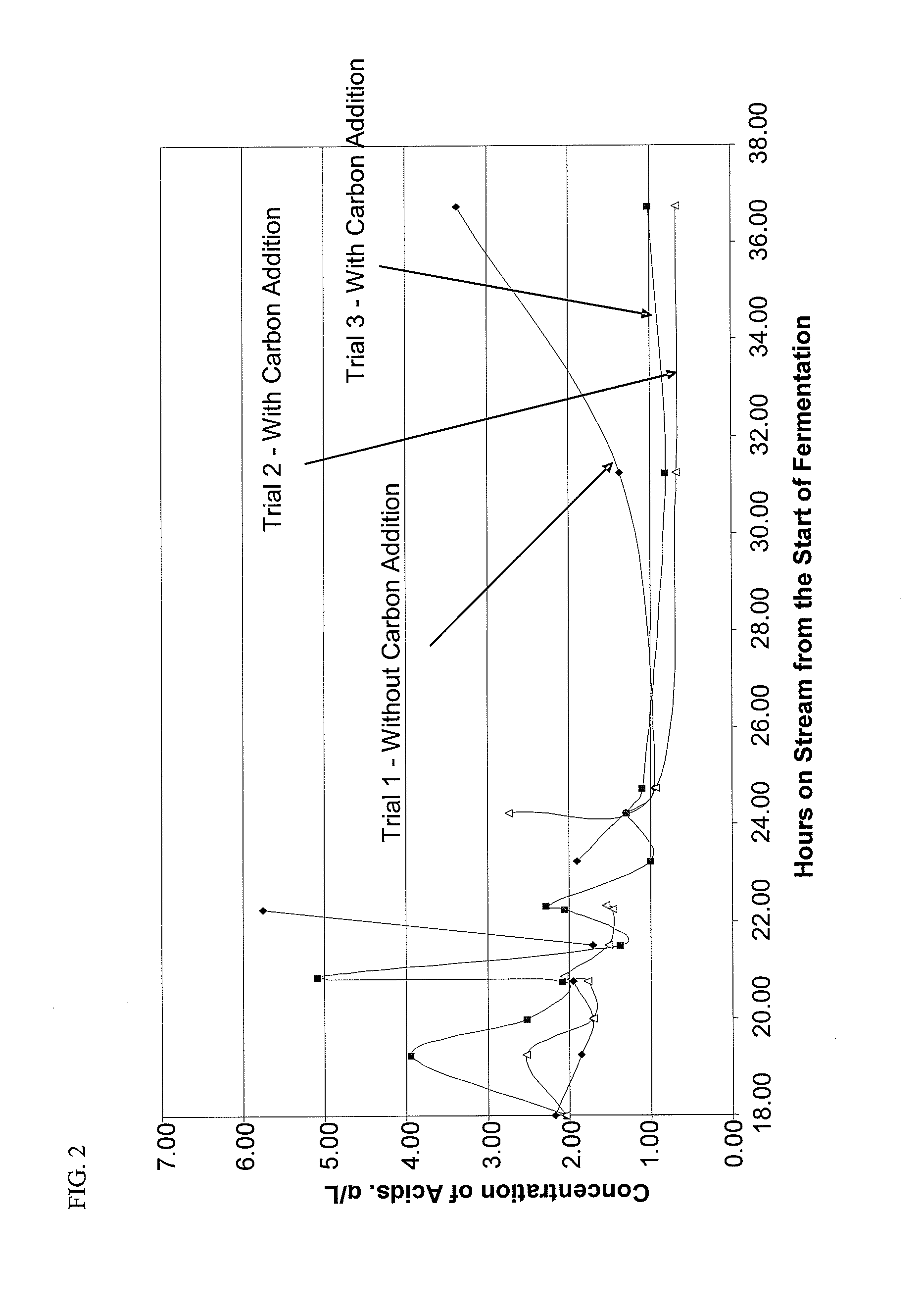Process for solvent production utilizing liquid phase adsorption
a liquid phase adsorption and solvent technology, applied in the separation process, biofuels, organic chemistry, etc., can solve the problems of toxic biofuel solvents to most cells and organisms producing solvents, and underexploited biofuels
- Summary
- Abstract
- Description
- Claims
- Application Information
AI Technical Summary
Problems solved by technology
Method used
Image
Examples
example 1
BA101 Fermentation with Calgon OL Adsorbent Addition
Organism, Culture Maintenance, and Fermentation Conditions
[0081]C. beijerinckii BA 101 was used for these studies. Spores (200 μl) were heat shocked for 10 min. at 80° C. followed by cooling in an anaerobic chamber for 5 min. The culture was inoculated into 10 ml Tryptone-glucose-yeast extract (TGY) medium (in 50 ml screw capped pyrex bottle) and was incubated anaerobically for 12-14 h at 36±1° C.
[0082]The composition of the TGY media is as follows: Tryptone (30 g / L), Glucose (20 g / L), and Yeast extract (10 g / L). Other nutrient media can be used. Useful nutrient media include those known to the art, such as P2. The nutrient media optionally can contain additives such as salts.
[0083]The composition of P2 media is as follows: Glucose (60-100 g / L) and Yeast extract (1-1.5 g / L). On cooling to 35° C. under oxygen-free nitrogen atmosphere, filter-sterilized P2 stock solutions [(buffer: KH2PO4, 50 gL−1; K2HPO4, 50 gL−1; Ammonium acetate, ...
example 2
BA101 Fermentation with Various Adsorbent Additions
Organism, Culture Maintenance, and Fermentation Conditions
[0094]C. beijerinckii BA 101 was used for these studies. Spores (200 μl) were heat shocked for 10 min. at 80° C. followed by cooling in an anaerobic chamber for 5 min. The culture was inoculated into 10 ml Tryptone-glucose-yeast extract (TGY) medium (in 50 ml screw capped pyrex bottle) and was incubated anaerobically for 12-14 h at 36±1° C.
[0095]The composition of the TGY media is as follows: Tryptone (30 g / L), Glucose (20 g / L), Yeast extract (10 g / L). Other nutrient media can be used. Useful nutrient media include those known to the art, such as P2. The nutrient media can optionally contain additives such as salts.
[0096]The composition of P2 media is as follows: Glucose (60-100 g / L) and Yeast extract (1-1.5 g / L). On cooling to 35° C. under oxygen-free nitrogen atmosphere, filter-sterilized P2 stock solutions [(buffer: KH2PO4, 50 gL−1; K2HPO4, 50 gL−1; Ammonium acetate, 220 g...
example 3
Solvent Recovery from Fermentation Broth via a Continuous Expanded Bed Adsorption Process
[0106]This pilot plant experiment for continuous production of ABE Fuel included fermentation of glucose, as described in above Experiments 1 and 2, with an expanded bed adsorption and thermal desorption process. The same reaction medium, organism, fermentation conditions, and analysis procedure of Examples 1 and 2 were adopted herein. OL Carbon was utilized as the adsorbent and was included in two 2 L vessels. The fermentor was a 10-Liter tank coupled to the adsorption bed unit. The fermentation reaction medium was circulated through a bottom-feed adsorbent bed, which was fluidized to eliminate any particulate plugging. The reaction medium was recycled to the fermentor subsequent to circulating through the adsorption bed unit. As indicated on FIG. 5, the reaction medium was fed to the adsorption bed after 10 hours of fermentation (for about an hour) and after 35 hours of fermentation (for about...
PUM
| Property | Measurement | Unit |
|---|---|---|
| Temperature | aaaaa | aaaaa |
| Temperature | aaaaa | aaaaa |
| Temperature | aaaaa | aaaaa |
Abstract
Description
Claims
Application Information
 Login to View More
Login to View More - R&D
- Intellectual Property
- Life Sciences
- Materials
- Tech Scout
- Unparalleled Data Quality
- Higher Quality Content
- 60% Fewer Hallucinations
Browse by: Latest US Patents, China's latest patents, Technical Efficacy Thesaurus, Application Domain, Technology Topic, Popular Technical Reports.
© 2025 PatSnap. All rights reserved.Legal|Privacy policy|Modern Slavery Act Transparency Statement|Sitemap|About US| Contact US: help@patsnap.com



